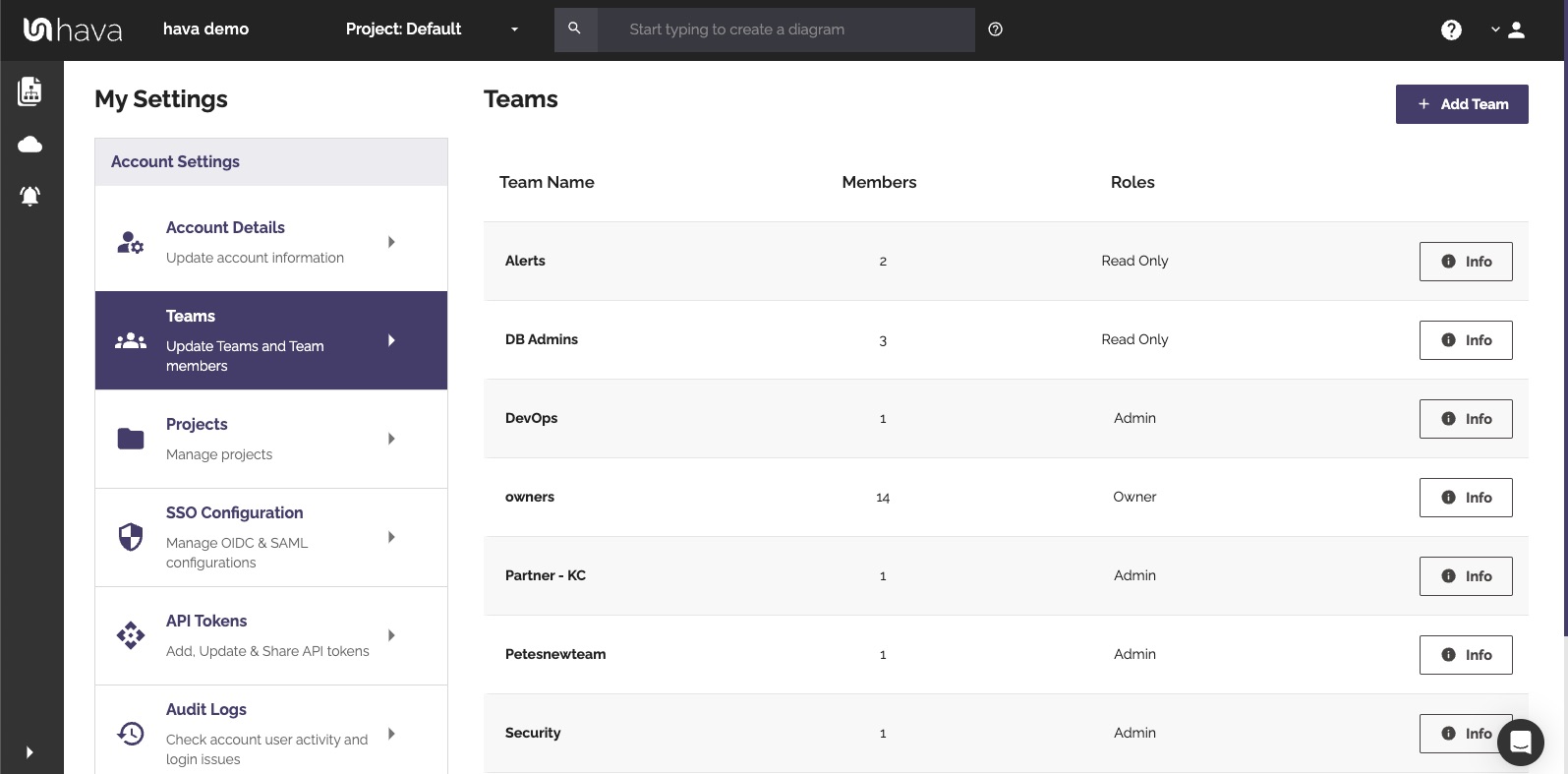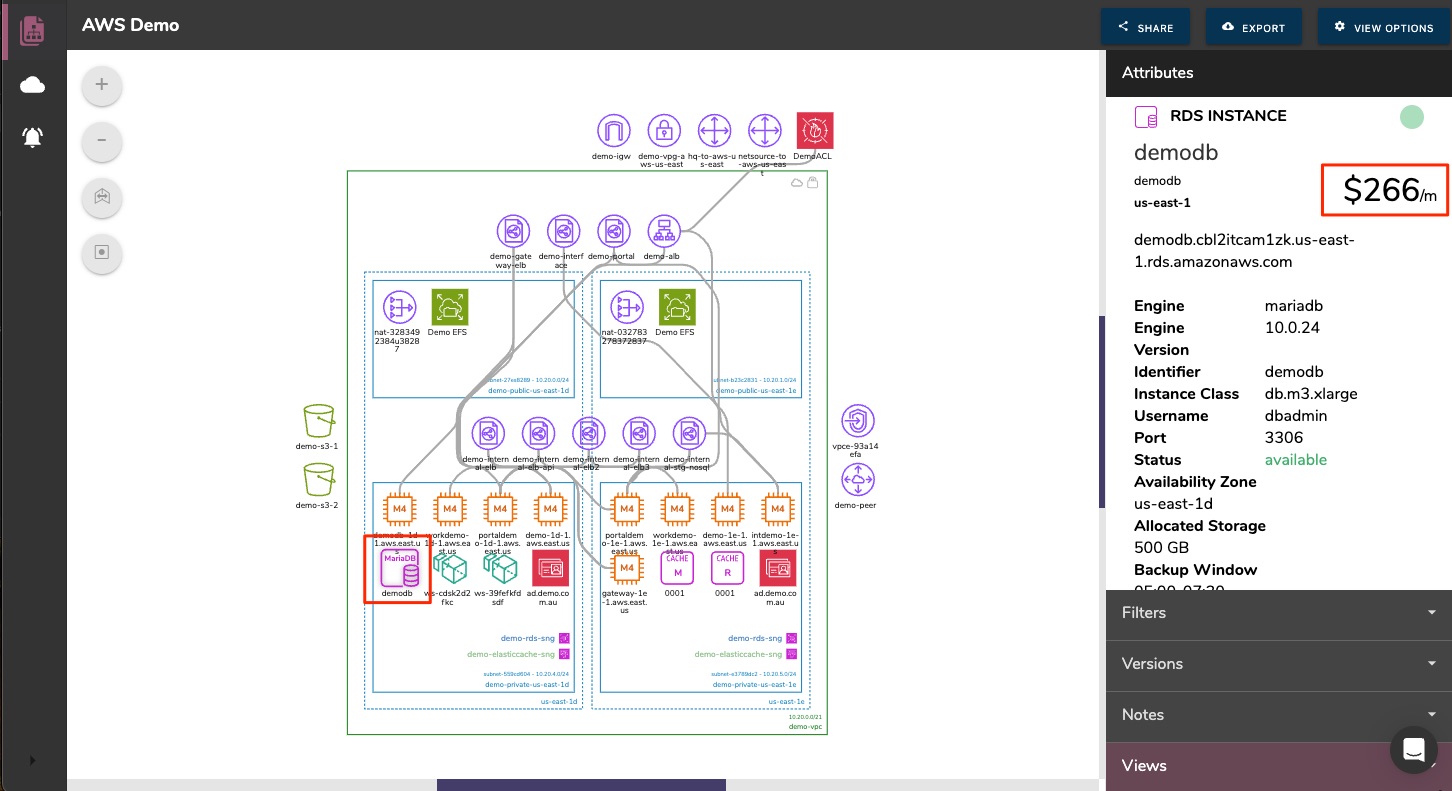
The clarity provided by effective cloud deployment diagrams is more important than ever whether you are working with a small single cloud deployment or massive hybrid architecture.
These diagrams are crucial for visualizing the structure of cloud infrastructure, understanding the deployment of applications, and ensuring that all team members—from developers to operations—have a clear understanding of how systems are intended to operate. This is where Hava.io, a leading solution for cloud visualization, comes into play, simplifying the process of creating detailed cloud deployment diagrams.
Why Use Cloud Deployment Diagrams?
Cloud deployment diagrams offer a visual representation of the environment where your applications, services, and databases live. They are essential for:
- Planning and Designing: Before deploying resources, cloud deployment diagrams help in planning and designing the infrastructure to ensure that it meets the required specifications and compliance standards.
- Troubleshooting and Maintenance: With a clear layout of how components connect and interact, identifying points of failure becomes easier, speeding up troubleshooting and maintenance.
- Enhancing Communication: These diagrams act as a communication tool that helps different teams (security, network, development) understand the deployment and collaborate effectively.
The Advantages of Using Hava.io for Cloud Deployment Diagrams
- Automation: Hava.io automatically generates cloud deployment diagrams by connecting directly to your cloud accounts. This ensures that the diagrams are always up to date with the latest state of your cloud infrastructure, eliminating the need for manual drawing and updating.
- Accuracy: By automatically generating diagrams from live data, Hava.io ensures high accuracy, reflecting the actual deployed environment without the discrepancies that can occur with manual diagramming.
- Version Control: Every time a change is made in your cloud environment, Hava.io automatically creates a new version of the relevant diagram. This allows teams to track changes over time and maintain a history of deployments, which is invaluable for audit trails and compliance.
- Security Insights: Hava.io’s diagrams provide not just structural but also security insights by visualizing the configuration of firewalls, security groups, and other security settings. This helps in identifying potential security weaknesses in the deployment.
- Integration: Hava.io integrates seamlessly with multiple cloud platforms like AWS, Azure, and Google Cloud Platform, making it a versatile tool for organizations using multi-cloud environments.
- Collaboration: Facilitating collaboration among team members, Hava.io allows you to share diagrams easily with stakeholders, providing features such as export options in various formats, including PDF and PNG, for presentations or detailed reports.
FAQs about Creating Cloud Deployment Diagrams with Hava.io
Q: How does Hava.io ensure the accuracy of cloud deployment diagrams? A: Hava.io directly integrates with your cloud environment to pull real-time configuration data, ensuring that the diagrams it generates are always accurate and up to date with the latest configurations.
Q: Can Hava.io handle diagrams for complex multi-cloud environments? A: Yes, Hava.io supports AWS, Azure, and Google Cloud Platform, making it an ideal solution for visualizing multi-cloud deployments and hybrid environments.
Q: How can Hava.io aid in compliance and security for cloud deployments? A: Hava.io’s diagrams help in visualizing and understanding security group rules, firewall settings, and other security configurations, aiding in compliance checks and identifying potential vulnerabilities.
Conclusion
For teams looking to enhance their cloud infrastructure management, Hava.io offers an effective solution for creating, maintaining, and utilizing cloud deployment diagrams. With its automated diagramming capabilities, version control, and detailed security insights, Hava.io ensures that organizations can maintain a robust, secure, and efficient deployment strategy.





